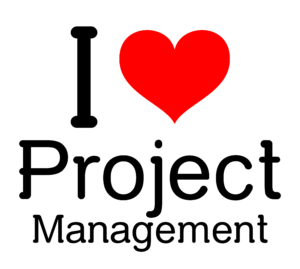We’re living in a time of transformation, and the project management profession is no exception. The old measures of success—finishing on time and under budget—are no longer enough. Today, sustainability is the new benchmark, and it’s reshaping how we define a successful project. Sustainability isn’t just a buzzword; it’s becoming the gold standard for industries everywhere. Companies are realizing that genuine success has to balance financial goals with the well-being of the environment and society. This is where ESG (Environmental, Social, and Governance) principles come in—offering a roadmap for project managers who want to make a real impact while leading with purpose.
The demand for sustainable practices is growing, and as a project manager, understanding how to integrate ESG considerations into your projects is no longer optional—it’s a strategic necessity. Let’s talk about why sustainability matters in project management and how you can start integrating ESG principles into your workflows.

The Rising Demand for Sustainability in Projects
Sustainability is no longer a nice-to-have; it’s a must-have. Stakeholders, clients, and even governments are pushing for more transparency and accountability when it comes to the environmental and social impacts of projects. In a 2023 survey by Deloitte, 73% of executives reported that they felt increased pressure from investors to improve sustainability efforts. This shift in priorities is reshaping what it means to be a successful project manager.
Interestingly, recent trends suggest that sustainability and financial stability are not opposing goals but fundamentally intertwined. Patagonia, for instance, has demonstrated how sustainability can drive profitability. By committing to environmental initiatives, such as using 100% renewable electricity in its global facilities and sourcing sustainable materials, Patagonia has not only minimized its environmental impact but also cultivated a loyal customer base that values sustainability. This integration of sustainability into core business strategies has become a model for how environmentally and socially responsible practices can drive long-term profitability.
Incorporating sustainable practices doesn’t just help the planet—it makes business sense. Projects that consider environmental and social impacts often experience fewer risks, more community support, and increased profitability in the long run. Think of it as future-proofing your projects. For example, when Patagonia prioritized the use of renewable materials and minimized its carbon footprint, it not only reduced risks associated with environmental regulations but also strengthened its brand loyalty and resilience. Similarly, by aligning your project with ESG principles, you ensure long-term efficiency and adaptability. Imagine a project without ESG considerations as a house built without insulation—sure, it stands, but over time, it becomes less efficient, more expensive to maintain, and uncomfortable to live in. On the other hand, a project that incorporates ESG principles is like a well-insulated, energy-efficient home—more comfortable, cost-effective, and resilient in the long run.
Integrating ESG into Project Management: Where to Start
1. Set Clear Sustainability Goals
The first step in integrating ESG principles into project management is to set clear sustainability goals from the start. Whether it’s reducing carbon emissions, ensuring fair labor practices, or minimizing waste, having defined targets will guide your project’s direction. Start by asking: how can this project positively impact the environment, society, and governance practices? Make these goals part of your project charter and ensure all stakeholders are aligned with them.
For example, if you’re managing a construction project, you might set a goal to source 50% of materials from recycled or renewable sources. If it’s a tech project, you could focus on reducing energy consumption by optimizing server usage or adopting green data centers. These clear goals not only help track progress but also keep everyone accountable.
The concept of ‘double materiality’ has also emerged as a best practice for companies aiming to position themselves as sustainability leaders. Double materiality requires companies to assess not only the financial impact of sustainability issues but also how their activities impact society and the environment. In simpler terms, it’s about looking at both sides of the coin: not only how environmental or social issues might affect the company’s bottom line, but also how the company’s operations affect the broader community and ecosystem. This dual perspective is becoming more common, especially in Europe, where new regulations are pushing companies to report on both financial and impact materiality. For instance, Unilever has embraced double materiality by transparently reporting on its environmental and social impacts alongside financial performance, helping stakeholders understand the broader effect of its operations.
2. Engage Stakeholders with Sustainability in Mind
Stakeholder engagement is crucial for any successful project, but it takes on even greater importance when you’re integrating ESG principles. Your stakeholders could include clients, team members, suppliers, and even the local community. Communicate the sustainability goals early and often, and make sure everyone understands why these goals are valuable.
When engaging stakeholders, remember that transparency is key. Share your sustainability metrics, progress, and even the challenges. This kind of open communication builds trust and helps ensure that everyone is on the same page. For example, if you’re reducing water usage in a manufacturing project, share the tangible benefits—like cost savings and improved community relations—to gain wider support.
Imagine a scenario where you are working on a community construction project, and you have committed to using renewable materials. By involving the community in these decisions—perhaps by organizing a town hall or a site tour—you not only gain their support but also educate them about sustainable practices. This type of engagement turns stakeholders into advocates, making your job as a project manager much easier.
3. Adopt Green Project Management Practices
Green project management isn’t about reinventing the wheel—it’s about tweaking existing practices to make them more sustainable. This could mean using digital tools to cut down on paper usage, planning meetings to minimize travel, or choosing suppliers with strong sustainability credentials. Lean and Agile methodologies can also play a role here; by emphasizing efficiency and reducing waste, they align well with ESG goals.
Take supply chains, for example. Supply chains are at the center of both environmental and social concerns. As highlighted by ESG Global Advisors, new laws such as the Corporate Sustainability Reporting Directive (CSRD) and Scope 3 requirements are forcing companies to examine every link in their supply chain to reduce carbon footprints and adhere to fair labor standards. For project managers, this means partnering with suppliers who share your sustainability goals and actively working to reduce waste and emissions throughout the supply chain.
For instance, if your project involves physical materials, adopt a circular economy mindset—how can you repurpose materials instead of discarding them? Green procurement is another approach: work with suppliers who share your values regarding sustainability and social impact.
The Project Manager’s Role in Driving ESG Success
As a project manager, your role in driving ESG success is both strategic and operational. You’re not just managing tasks; you’re leading change. By keeping sustainability top of mind, you can guide your team toward decisions that are beneficial for both the project and the planet. Project managers are in a unique position to influence outcomes by embedding ESG considerations at every stage—planning, execution, monitoring, and closing.
One of the most powerful tools at your disposal is simply asking the right questions. During planning sessions, ask your team, “How can we make this process more sustainable?” or “What environmental or social risks are we overlooking?” Creating space for these discussions will help ensure that sustainability isn’t an afterthought—it’s a core component of the project.
Think of yourself as the captain of a ship navigating uncharted waters. Picture managing a remote solar farm installation—your course might be uncertain, and the seas unpredictable, but by keeping sustainability as your guiding compass, you not only ensure that your ship reaches its destination, but you also do so in a way that leaves the ocean cleaner and future voyages smoother. By embedding ESG principles into your decision-making, you create a positive ripple effect that benefits not only the current project but also sets the stage for sustainable practices in future endeavors.

The Future of Project Management is Green
Sustainability isn’t a passing trend—it’s a lasting transformation. Project managers who embrace ESG principles are positioning themselves and their organizations for long-term success. The benefits are clear: reduced risks, stronger community relationships, enhanced reputation, and often, better financial performance. Green is the new gold, and those who adapt will thrive.
New trends, such as the rise of biodiversity as a mainstream ESG topic, are also starting to gain traction. Biodiversity, which was once a niche consideration, has become central to ESG strategies, with companies now required to report on how their operations impact nature and ecosystems. This increased focus on natural systems means that project managers need to consider not just carbon footprints but also how their projects impact land, water, and biodiversity.
So, whether you’re managing a construction build, an IT rollout, or a marketing campaign, the time to integrate ESG principles is now. Your projects, your stakeholders, and the planet will thank you for it.





